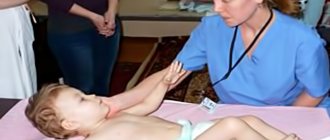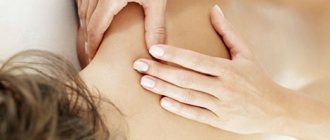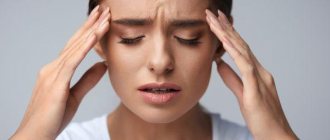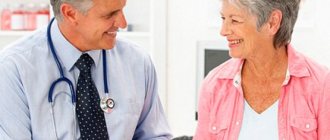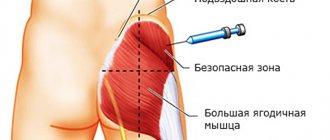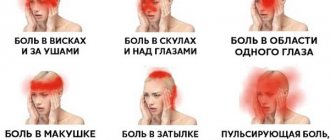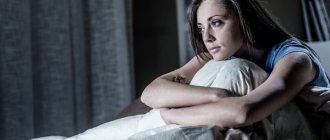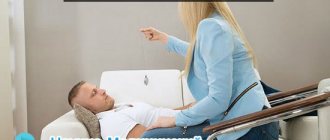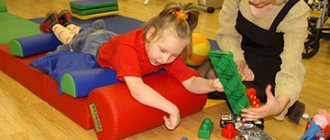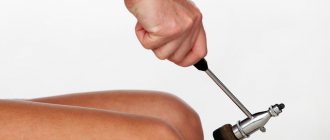Massage for neuroses
Neurosis is a group of functional psychogenic diseases that manifest themselves as disturbances in the emotional, somatic, and vegetative spheres.
The form and nature of a neurotic breakdown are associated with the characteristics and individual predisposition of each person. Massage for neuroses
Neurosis combines three classical forms of the disease: neurasthenia, obsessive-compulsive neurosis and hysteria (hysterical neurosis). Often a patient is simultaneously affected by several neurotic syndromes.
Pronounced autonomic disorders in the cardiovascular system are manifested:
- long-term pain in the chest that occurs during emotional rather than physical stress, there is no effect from antispasmodic therapy;
- disorders: feeling of insufficient inhalation, lack of air;
- increased salivation from the digestive system;
- spasm of the esophageal muscles, pain in the stomach;
- regurgitation and vomiting;
- possible dysfunction of the thyroid, pancreas and gonads.
Neurasthenia
The clinical picture of neurasthenia includes asthenic, depressive, hypochondriacal syndromes with neuropsychic, cephalgic, vegetative-visceral clinical manifestations.
Asthenic syndrome is characterized by:
- increased fatigue: physical and mental;
- decreased memory and attention;
- increased irritability;
- unstable mood;
- hypochondriacal manifestations: excessive concern for one’s health, fear of incurable diseases;
- increased sensitivity to external stimuli: auditory, sound, olfactory and tactile, to meteorological factors and ambient temperature.
Frequent headaches are diffuse, contracting in nature, accompanied by tension in the supracranial (occipital-frontal) muscles. Sleep disorders are manifested by difficulty falling asleep and shallow sleep.
Neurosis is characterized by:
- obsessive fears (phobias): cardiophobia, cancerophobia, thanatophobia (fear of death), oxyphobia (fear of sharp objects) and other fears (heights, closed or open space, pollution, etc.).
- obsessive states (obsessions), during which the patient is plagued by constant thoughts, memories and doubts, movements and actions while maintaining a critical attitude towards them.
Hysterical neurosis (hysteria)
Neurosis is characterized by: obsessive disorders: emotional-affective, pseudo-neurological and vegetative-visceral.
The former are characterized by demonstrative experiences and their certain situational dependence. Pseudo-neurological disorders are complemented by movement disorders: paralysis, paresis, and coordination disorders.
Also: speech disorders (aphonia, stuttering), sensory disorders, convulsive seizures of the clonic type.
These disorders have one feature: they do not have objective neurological disorders.
Patients with hysteria are vulnerable, suggestible and selfish, trying in every possible way to attract attention to themselves. The most severe clinical symptoms of hysteria are hysterical attacks, which can occur even due to minor troubles.
The patient sits down or lies down, begins to wave his arms, laugh or cry.
In more severe cases, tonic and clonic convulsions occur, which quickly pass or contribute to the appearance of long-term motor and sensory disorders.
massage of the collar area for neuroses
The task of massage
- normalization of the psycho-emotional and functional state of the autonomic and somatic nervous system;
- reduction of autonomic disorders;
- improved sleep;
- increasing the body's resistance and functional ability;
- reducing muscle tension.
Indications for use of massage
- mental disorders, including neurasthenia, obsessive-compulsive disorder, hysterical neurosis;
- somatic and vegetative disorders.
Contraindications for massage:
- psychoemotional disorders that make it difficult to contact the patient;
- attacks of hysteria;
- general poor condition of the patient.
Massage plan
- massage of the head and collar area;
- massage of the spinal areas of the back;
- massage of the chest, abdomen and limbs (according to indications).
Massage technique
The head and collar area are massaged with the patient in a sitting position.
Massage of the scalp is performed:
- grasping stroking of the scalp from the forehead to the back of the head, rake-shaped rubbing using the pads of the fingers: straight, spiral over the entire surface of the head, starting from the crown, gradually moving in the frontal, temporal, occipital zones;
- intermittent pressing with rake-shaped fingers on the soft tissues of the head with displacement of the underlying tissues;
- gentle displacement of soft tissues in the sagittal plane: one hand is placed on the forehead, the second on the back of the head and movements are made from front to back and vice versa;
- gentle displacement of the soft tissues of the head in the frontal direction: the palms are placed on the temporal areas and shift the soft tissues from left to right and vice versa;
- deep stroking of the behind-the-ear areas with fingers in the direction from the temporal region to the nipple-shaped process;
- Perform between techniques and end with a head massage by stroking from the frontal to the occipital area.
Forehead massage for neuroses
Forehead massage is performed:
- linear and spiral stroking with symmetrical finger movements from the middle of the forehead to the temporal areas;
- flat stroking with fingertips from the middle of the forehead between the eyebrows upward to the border with the scalp;
- gentle pressure on the soft tissues of the forehead without displacing them;
- circular stroking around the temporal fossa and light pressing in the area of the temporal fossa with one finger (symmetrical movements of the hands on both sides);
- gentle stroking, rubbing with your fingertips, kneading and moving the tummy of the occipitofrontal muscle;
- spiral rubbing of the muscles at the points of attachment to the occipital bone;
- gentle stroking from the frontal area to the back of the head.
Massage of the collar area is performed:
- grasping stroking of the occipital region, lateral and posterior cervical region;
- spirally rubbing the back of the head with the fingers, grasping the mastoid process and the external occipital crest and vice versa;
- spiral and planar rubbing (sequentially or simultaneously with both hands) of the lateral and back surfaces of the neck;
- forceps-like rubbing of the sternocleidomastoid muscles of the neck;
- linear and spiral rubbing with fingertips, sawing and intersection of the trapezius muscle;
- rubbing the VII cervical vertebra with spiral movements (“sun”) from the spinous process in all directions.
- stroking and rubbing the subclavian muscle from the sternum towards the axillary lymph nodes;
- kneading the trapezius muscle along the muscle fibers: the descending part - from the occipital region to the scapular spine; ascending - from the spinous processes of the thoracic spine to the scapular spine using techniques of pressing, stretching, displacement; the edges of the muscles - longitudinal, transverse, forceps kneading;
- forceps-like kneading of the sternocleidomastoid muscles;
- kneading the pectoral muscles, pressing, squeezing, shifting;
- stroking the entire collar area between techniques and at the end of the massage.
Massage of the head and collar area is not recommended to be performed with intensive techniques. For vegetative-visceral disorders, the corresponding paravertebral and reflexogenic zones of the thoracic and lumbar spine and abdomen are massaged.
For asthenic syndrome, somewhat intensive techniques are indicated: rubbing and kneading, intermittent vibration, but they are not indicated for increased excitability. It is advisable to combine massage with appropriately selected light music, auto-training, and psychotherapy. Physiotherapeutic, hardening procedures, and physical therapy are effective.
Massage procedures continue - 10-15 minutes during the course of treatment - 15-20 sessions 3-4 times a year.
Massage to relieve tension and stress - video
Source: https://vash-massazh.ru/massazh-pri-nevrozah/
Impact zones
Anti-stress massage is performed in several areas of the body:
- face;
- head;
- cervical-collar area;
- back;
- feet.
For diseases of the nervous system, anti-stress massage is performed on the head and in the neck-collar area. It relieves headaches, improves cerebral circulation, and relieves tension in the neck and shoulders.
Anti-stress back massage with oils
Massage for women under stress is performed on the back and feet. It not only relieves stress, but also regulates a woman’s hormonal levels and improves heart function. When pressing on the tactile points of the foot, the activity of internal organs improves, sleep becomes restful, metabolic processes accelerate, and weight decreases. Impact on the points of the back and feet is also useful for men: the production of hormones improves and the risk of prostate adenoma and other inflammatory diseases decreases.
Face
Acupressure facial massage helps get rid of a double chin, emphasizes cheekbones, tones the skin and prevents the appearance of wrinkles.
For better results during anti-stress facial massage, use cream. Session duration is 45 minutes.
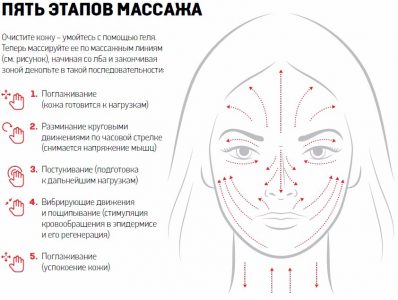
Facial massage technique
Acupressure: effect, indications and technique
Acupressure is a mechanical effect of the fingers on biologically active points on the human body. The most popular are two techniques of such influence: the Chinese one called acupuncture and the Japanese one called shiatsu.
To perform acupressure, especially at home, you need to carefully study its difficult technique. You can give yourself such a massage after training, for example, at courses in St. Petersburg.
However, it is better for beginners to practice for some time.
The effect of acupressure depends on which point the specialist affects. In general, such manipulations have a calming effect on the central nervous system.
After such activation, a person usually feels harmony and balance.
Acupressure of the hands helps eliminate fatigue and general malaise. With its help, it is possible to significantly improve blood circulation, get rid of toothache and gum problems, and migraines. In this case, a chiropractor can work with bioenergy points of both one and both hands.
This manipulation has a therapeutic effect on the blood vessels, allowing blood to circulate much more easily.
Massaging points located on the legs is a prevention of cardiovascular diseases. In addition, this procedure allows you to eliminate pain in the legs, which is often a symptom of serious vascular problems.
Targeted effects on strictly defined areas of the body have a positive effect on the entire musculoskeletal system. Manipulations help increase the elasticity of muscles and joints, strengthen the lower back, improve blood supply, vigor and performance, and eliminate pinched nerve roots.
With the help of acupuncture it is possible to slow down degenerative processes in muscles in various rheumatic diseases. When influencing the muscular system, complete muscle relaxation is necessary. To do this, the patient must take a position in which the muscles can relax as much as possible and receive benefit rather than harm.
The positive effect of this procedure on the cardiovascular system can be observed during the redistribution of blood - blood begins to flow from the internal organs to the skin and muscles. As a result, peripheral vasodilation occurs, which greatly facilitates the work of the heart.
Acupuncture sessions help improve blood supply to the heart muscle, speed up metabolism, promote oxygen saturation of tissues, and reduce congestion in the pulmonary and systemic circulation.
After acupressure, there is an improvement in the pumping function of the heart.
Acupressure is indicated for a variety of pathologies of the body. In addition to the main treatment, any system or organ can be affected using acupuncture techniques.
This will help cure the disease and improve the patient’s overall clinical well-being, reduce high blood pressure, and help get rid of allergies.
Acupressure should be performed correctly and only by a professional with medical education.
The main indications include the following pathologies:
- Neuroses are a group of diseases caused by psychotraumatic influences (depressive, hysterical, fear neuroses, stress, etc.).
- Diseases of the digestive system - functional disorders of the stomach, esophagus, intestines (pancreatitis), gall bladder.
- Pathologies of the nervous system - neuritis of the nerves, VSD, migraines, dizziness, neuralgia of the trigeminal, hip and sciatic nerves, tinnitus, brachial plexitis and other neurological disorders and neurological symptoms.
- Osteochondrosis of the spine, problems with the lumbar region.
- Diseases of the circulatory system (arrhythmia, tachycardia).
- Hormonal disorders - problems with the thyroid gland.
- Diseases of the connective tissue and musculoskeletal system - intercostal myalgia, arthrosis deformans, allergic and rheumatoid arthritis, spondylosis, lumbago, osteoarthritis.
Therefore, such techniques can have both a calming and stimulating effect on the body, depending on the choice of technique. According to the direction of their influence, the points are:
- General action - by influencing them, you can influence the general functional state of the entire central nervous system.
- Local points are responsible for the operation of specific systems and organs. They are usually located in ligaments, joints, muscles and blood vessels.
- Spinal – located along the spine, at the origin of nerve roots and autonomic fibers. Impact on such points improves the functioning of a variety of organs: pancreas, lungs, spleen, diaphragm, colon and others.
Basic acupressure techniques:
- pressing with a finger or palm,
- light touch,
- continuous stroking
- deep pressure,
- trituration,
- grasping (pinching),
- injection,
- vibration.
When using all these techniques, it is very important to follow important rules of procedure.
Stroking should be carried out continuously, allowing both a slow and fast pace at the discretion of the specialist, however, the given pace should be maintained without reduction throughout the entire procedure.
Stroking with rotation can be carried out with slight pressure. All rotations are performed clockwise.
The impact on the point is made strictly perpendicular to the surface of the skin.
Manipulation can be performed with rotational and vibrating movements. Deep pressure should not last long. Using a massager or stick to influence the points is unacceptable; pressure is possible only with the help of your fingers.
When massaging points in the abdominal area, all techniques are performed while the patient exhales. When influencing points on the back, the patient should lie down with a pillow under the stomach.
For chronic diseases, massage of biologically active points is sufficient after 1-2 days.
For women, acupressure should be done a few days before the start of menstruation, for men at any time. In the presence of acute pathologies, with the permission of the attending physician, acupuncture should be performed every day.
There are special diagrams in the photo and you can even buy or download from YouTube a whole complex with a video, which shows in detail the location of active points on the human body, both male and female. Usually, in the same picture you can see information about which point is responsible for which organ and with what force it is necessary to exert a therapeutic effect on it.
If we are talking about pathologies in the stomach or intestines, specialists simultaneously influence the points of the lower and upper extremities. Please note that acupressure is not available for pregnant women. Modern medicine believes that pregnancy is a contraindication to the procedure.
For gynecological diseases and pathologies of the gastrointestinal tract, active points located symmetrically to each other are affected.
When treating lumbosacral radiculitis, the effect can be applied to points located directly at the site of the disorder or where pain relief is necessary.
A child’s strong immune system is the basis of his health and the care of parents from the very birth of the baby. The issue of immunity especially often arises when a child begins attending kindergarten. In any preschool educational institution, a child with a runny nose will be sent home.
Therefore, increasing the defenses of a growing organism is a priority and individual task. One of the methods of strengthening the immune system is acupressure massage of biologically active points according to the author’s system of Professor Alla Alekseevna Umanskaya.
This method is based on the classic impact of fingers on only 9 points located on the child’s body. According to Professor Umanskaya, it is these active points that are responsible for the functioning of the entire child’s body, from head to toe.
Massaging the active points allows you to enhance the protective properties of the growing body, in particular the larynx, bronchi, nasopharynx, trachea, and many other organs in cold weather. The effect manifests itself individually and is comparable to acupuncture. Manipulations using the method of Professor Umanskaya promote recovery in various pathologies and can be carried out for:
- runny nose, sore throat, sore throat with fever,
- influenza, ARVI, acute respiratory infections, rhinitis,
- sinusitis, adenoids (swelling of the throat),
- otitis, sinusitis, hearing loss,
- cough, bronchitis,
- anemia,
- whooping cough
- back pain,
- stuttering, logoneurosis and other speech therapy problems,
- impaired urination (enuresis) and constipation,
- scoliosis,
- headache and toothache,
- insomnia,
- for weight loss (for schoolchildren),
- eye fatigue.
Biologically active points according to the method of Professor Umanskaya:
Point No. 1: occupies the area of the entire sternum and is in relationship with the mucous membrane of the trachea, bronchi and bone marrow. Massaging it helps improve blood formation and reduce coughing, making it easier for the child to fall asleep.
Point No. 2: interconnected with the mucous membrane of the larynx, lower parts of the pharynx and the thymus gland. Exposure to it allows you to activate reduced immune functions.
Point No. 3: allows you to increase the protective functions of the mucous membrane of the larynx and pharynx of a preschooler. Exposure to it improves metabolism and blood circulation, helps to increase the synthesis of hormones.
Point No. 4: associated with the mucous membrane of the posterior pharyngeal wall, the lining of the larynx and the superior cervical sympathetic nerve ganglion. Improves blood supply to the entire body, as well as the head.
Point No. 5: affects the mucous membrane of the esophagus and trachea. Massaging it helps restore the functioning of the bronchi, blood vessels, lungs and heart, and bladder.
Point No. 6: associated with the anterior and middle lobes of the pituitary gland. Her massage improves blood supply to the mucous membranes of the nasopharynx and maxillary cavities and relieves inflammation.
Point No. 7: connected to the mucous membrane of the frontal sinuses and to the frontal parts of the brain. Massaging it improves both the vision and mental development of the child.
Point No. 8: is located in the area of the ear tragus and, when massaged, has a positive effect on the vestibular apparatus and hearing organ of even a newborn.
Point No. 9: located on the hands and helps restore the functioning of a variety of body systems, since the hands are connected to parts of both the spinal cord and the brain.
Source: https://www.beauty-shop.ru/info/tochechnyy-massazh-effekt-pokazaniya-i-tekhnika-vypolneniya/
Introduction
Currently, medicine has a new means of combating the disease of the century - chronic stress - anti-stress massage. This is not only a general strengthening treatment procedure. It perfectly tones, relieves fatigue and overwork, and restores performance.
The results of a relaxing (anti-stress) massage are: relieving fatigue and restoring strength through relaxation of the muscles and psyche, mobilization of mental activity, stimulation of the immune system, reduction of appetite by restoring energy balance, rejuvenation of the body, cleansing it of toxins, sound and healthy night's sleep, creating a positive emotional mood. Relaxing massage: individual approach, correct impact - and you are ready for new achievements!
Diseases of the nervous system | Pain-relieving and wellness massage
Prevention
Modern man experiences enormous psycho-emotional stress. And it is no coincidence that in our time the concept of the so-called manager syndrome has arisen - a person “driven” by work problems and incredible stress. The crazy pace of life, negative information from the pages of newspapers and other media, troubles at home lead to a weakening of the nervous system.
In addition to pharmacological medications that a doctor may prescribe after an examination, fresh air, a healthy lifestyle, and proper nutrition are necessary. Recently it has been proven that massage has a positive effect on the restoration of impaired functions after various injuries to the nervous system.
In complex therapy, acupressure occupies a prominent place as a method that increases the effectiveness of therapeutic measures. Acupressure is used to improve blood circulation, normalize muscle tone and trophism, restore muscle strength, reduce pain, and prevent the development of contractures (limited mobility in joints).
If the nervous system is damaged, it is useful to combine massage procedures with exercise therapy.
Neurosis
Neuroses are a group of neuropsychic reversible painful conditions caused by emotional overstrain, occurring mainly in persons with a weakened nervous system.
The causes of ailments are strong negative, but persistently occurring mental trauma and fear.
The main forms of neuroses are neurasthenia (nervous weakness, a type of neurosis characterized by increased excitability and irritability combined with rapid fatigue and exhaustion), hysteria (mental and sensitivity disorders), obsessive-compulsive neurosis.
Treatment comes down to eliminating the sources of anxiety, creating normal working conditions, and taking vitamins and tranquilizers prescribed by the doctor. In recent years, acupressure has been very popular.
In case of general neurosis or a feeling of fear, it is recommended to massage the point under the nose, in the upper third of the vertical groove of the upper lip. You can also work on the BAP on the forehead between the inner ends of the eyebrows.
If you are depressed, you should apply pressure to points on your feet, in the center of the sole, in the depression formed when the toes flex between the II and III metatarsal bones.
Also, for neuroses (neurasthenia, hysteria), you should massage a point in the popliteal fossa. In a sitting position, apply pressure to both points simultaneously, making light circular movements with your index fingers.
It is better to massage with medium force; You can do the pressure in the morning and evening, before going to bed.
For neuroses and neurasthenia, a calming version of the effect is usually used, and to enhance the effect, pressure is combined with rotation techniques (Fig. 16). The number of points used per session is 3–5. The course of treatment is 10–15 sessions, after which you should take a break for 15–20 days, and then repeat the course.
Lightly biting the tip of the tongue with the teeth (incisors) at a rhythm of 20 movements per minute has a beneficial effect on the nervous system.
Rice. 16. Acupuncture points for neuroses and to relieve fear
Insomnia
Insomnia is a complete or partial lack of sleep or disturbance in its duration. Occurs with functional disorders of the nervous system, sometimes with a change in work schedule, negative experiences (stress or depression).
Of course, you can turn to medications, but first, if you have nervous overexcitation, which can cause insomnia, it is better to use a massage. Acupressure is one of the most gentle ways to influence the nervous system.
Rice. 17. Impact on acupuncture points for insomnia
For insomnia, it is useful to massage points on the soles of both feet (Fig. 17). You need to place the tips of your thumbs on the lower back to the right and left of the spine and, pressing, move them up along the paravertebral lines to approximately the angle of the shoulder blades. Then put your hands over your shoulders so that your index fingers rest at the angle of the shoulder blades on the paravertebral lines.
Perform pressure on the points up to the neck, then press on the BAP in the back of the head. Also, for insomnia, it is useful to press on a point in the lower part of the auricle, which is located in the middle of the earlobe. In a state of complete rest, the massage is performed with light movements with the tips of the index fingers, clasping the earlobe on both sides.
Sleep will come faster if you press more often on the right side than on the left.
Neuralgia
Neuralgia is a lesion of the peripheral nerves, characterized by sharp, aching, painful, paroxysmal or burning pain along their course. The trigeminal, greater or lesser occipital nerves are most commonly affected.
With trigeminal neuralgia, they are concentrated on the half of the face where the affected nerve passes. Acupressure for occipital neuralgia should be used for prevention, as well as in the subacute stage, during the period of pain subsiding. In case of inflammation of the trigeminal nerve, it is necessary to massage the points indicated in Fig. 18.
Neuralgia of the occipital nerves most often occurs with osteochondrosis, sometimes after the flu. Pressing is performed in the occipital region of the head and on the back of the neck. The effect on the greater occipital nerve is carried out on the back surface of the head outward from the tubercle of the occipital bone. The lesser occipital nerve is pressed at a point behind the mastoid process.
Pressure on these BAPs is carried out sequentially for 2–3 days, and the pressure should not increase pain. Procedures are carried out daily, each lasting 1–2 minutes. The course of treatment is 12–15 sessions. Acupressure can be combined with simple exercises for the neck - bending, turning the head.
They start with movements “until it hurts”, gradually increasing the amplitude.
Rice. 18. Acupressure points for neuralgia: a, b – for massage of the trigeminal nerve of the face; c – BAT for pressing the greater and lesser occipital nerves
Source: https://aupam.ru/pages/profilaktika/bole_ozdo_massazh/page_18.htm
East against stress
In Eastern medicine, to restore the body in such cases, reflexology is used, that is, exposure to a biologically active point (BAP) called Feng Chi.
This is a paired (symmetrical) point, which means that it is located symmetrically on the left and right sides of the body. This particular point is located on the head, or rather on the back of the head.
Finding it is not difficult; to do this, you need to place your right hand behind your head and, with your index or middle finger, feel for a small depression approximately at the hairline (at the junction of the head and neck, under the occipital bone).
Treatment
Correction of childhood neurosis involves an integrated approach and is carried out by specialists and parents. Treatment will depend on the established cause of the development of neurosis in the baby and can combine methods of drug therapy, homeopathy, massages, fairy tale therapy, etc.
Taking homeopathic medicines can effectively reduce anxiety and improve sleep quality. Shows the best results as part of complex therapy. A homeopathic treatment regimen is developed individually for each child, taking into account his characteristics, habits, and preferences.
A child has a better chance of a healthy, happy life with the active participation of parents, who can provide the necessary support and a large amount of repeated positive emotions. The cost of treatment depends on the type and degree of neurosis, the need for auxiliary therapy and many other factors. To get the most complete information, contact medical specialists.
